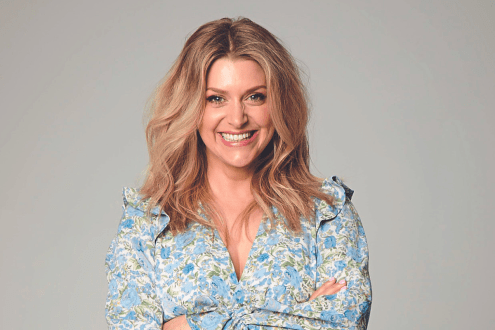Try progressive muscle relaxation
Jane Bozier, registered nurse and mindfulness expert, shares her guide to progressive muscle relaxation

Start including progressive muscle relaxation in your routine with the podcast below. The recording is designed to guide you through the different stages of progressive muscle relaxation and to help you master the technique.
Ellen Tout spoke to mindfulness expert Jane Bozier about developing the podcast.
What is progressive muscle relaxation?
Progressive muscle relaxation (PMR) is a relaxation therapy developed and introduced in 1929 by Professor Edmund Jacobson.
When practising PMR, you systematically tense and relax the different muscle groups in your body, focusing on the difference in how they feel. If you start with your feet and work your way up, you tense your toes by clenching them, using relaxing breathing techniques throughout. For example: breathing in and out, counting to five and relaxing your toes.
You tune in to how relaxing your body parts feels and how the tension feels. Neither is right or wrong, you just notice the difference.
How can these techniques help people?
Research has suggested that PMR has positive outcomes for insomnia and can be helpful as part of your bedtime routine. Additional research has suggested that it can also help with anxiety and stress.
How is this different to meditation?
PMR focuses on consciously tensing and relaxing the muscles, which induces a state of relaxation. Does it differ from meditation? Yes. There are many forms of meditation. Some people meditate with an object of focus; this could be the breath or a mantra. Some people sit quietly and pay attention to their thoughts, feelings and body sensations to see what arises.
What should people do if they become distracted during the exercise? Is this OK?
If you find that you get distracted while you’re practising, don’t worry. It happens! Just bring your attention back to the muscle group that you were focusing on and carry on from where you left off.
How often should people practise these techniques?
If possible, use PMR daily – 10 minutes to start with and, as you get used to it and feel more confident, extend to 25 minutes. Try to build it into your daily routine and allocate whatever time you can to keep the practice going. Five minutes is better than none!
How and when did you first start using mindfulness and progressive muscle relaxation?
I have always been interested in complementary therapies. My real passion is mindfulness in the workplace and mindful leadership. I really enjoy looking at the role mindfulness plays in change management. I love to share opportunities for mindfulness in daily living for all ages at home, work and in play.
Initially, a work colleague gave me a book and a CD to try. I put the CD on and body scanned every night for three weeks, feeling daft. I started getting comments like ‘You’re different’ and ‘You’ve changed’, and this spurred me on to read the book. I then went on a course and a couple of retreats, and started teaching – eventually gaining my MSC in Mindfulness-based Approaches.
I was introduced to progressive muscle relaxation in the early 1990s, while working in an elderly assessment unit. In 1993, I became a community psychiatric nurse and continued to use PMR with patients in the community. I also studied stress management during this period of time to support the use of PMR.
Read more on Bupa’s mindfulness blog here.
Listen to the podcast here:









